Wellfleet Bay turtle volunteers and most of the turtle staff have been focused on diamondback terrapins lately, but the sanctuary’s sea turtle work continues all year long. In fact, it’s expanding!
Besides the well-known cold-stun sea turtle rescue operation in the late fall and early winter, Wellfleet Bay staff are the federally mandated responders to every sea turtle stranding in southeastern Massachusetts during the summer and early fall. These “summer” strandings are single turtles, most of which were killed either by vessel strike or entanglement in lobster/fishing gear.
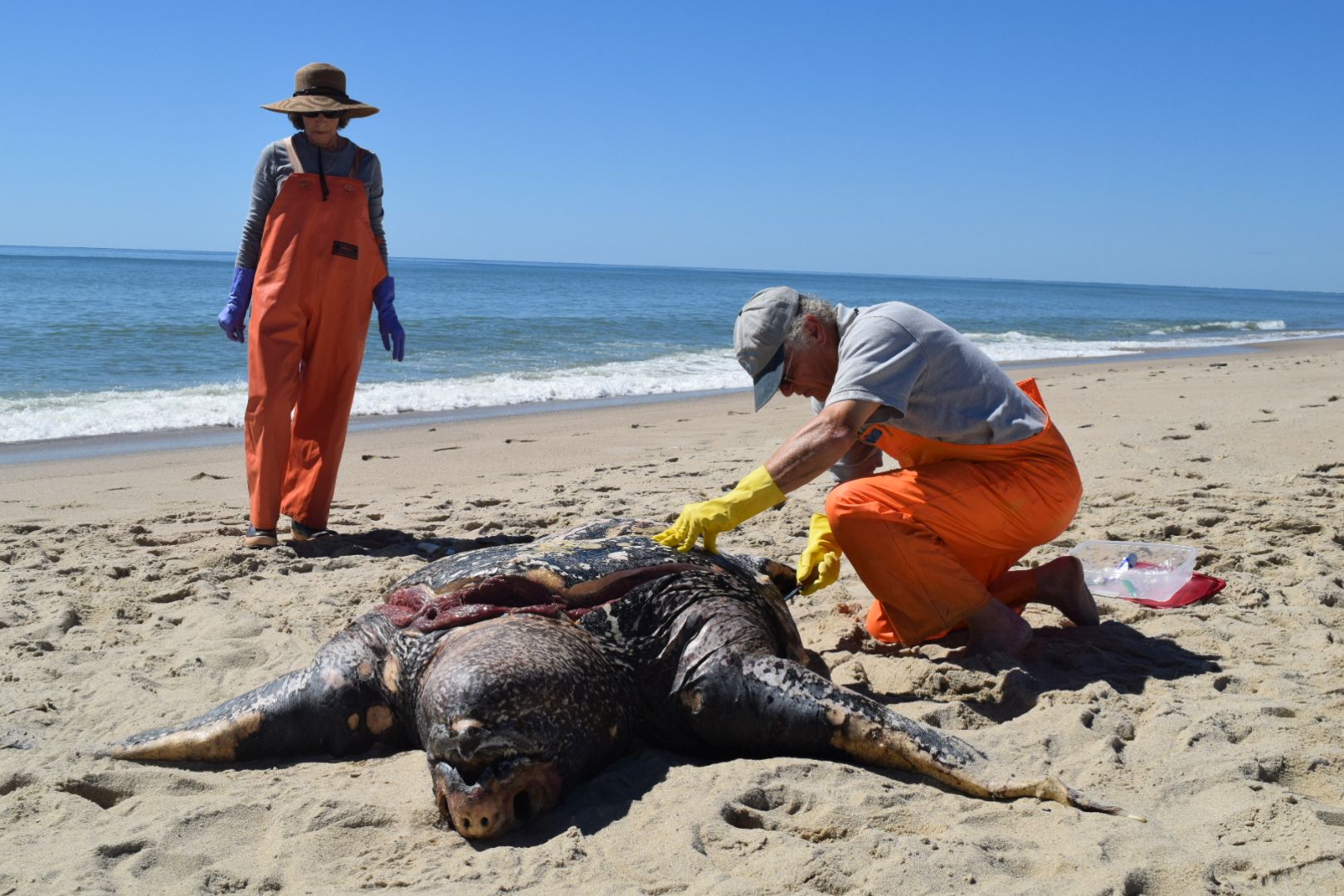
Responding to a stranding: Turtle team members Bob Prescott, Karen Dourdeville, and Olivia Bourque traveled to Nantucket to necropsy this beached leatherback in September of 2016. (Photo by Olivia Bourque).
Recently, WBWS partnered with Coonamessett Farm Foundation, NOAA Northeast Fisheries Science Center, and Marine Biological Laboratory in applying for a Massachusetts Environmental Trust grant to fund additional studies from the summer strandings. We just learned that this proposal was successful, and we’ll share funds with the three other organizations to study lipids/fatty acids and stable isotope samples from these summer strandings. This research further emphasizes the importance of not only rescuing live, cold-stunned sea turtles in the late fall/early winter, but also the importance of learning as much as possible from dead sea turtles.
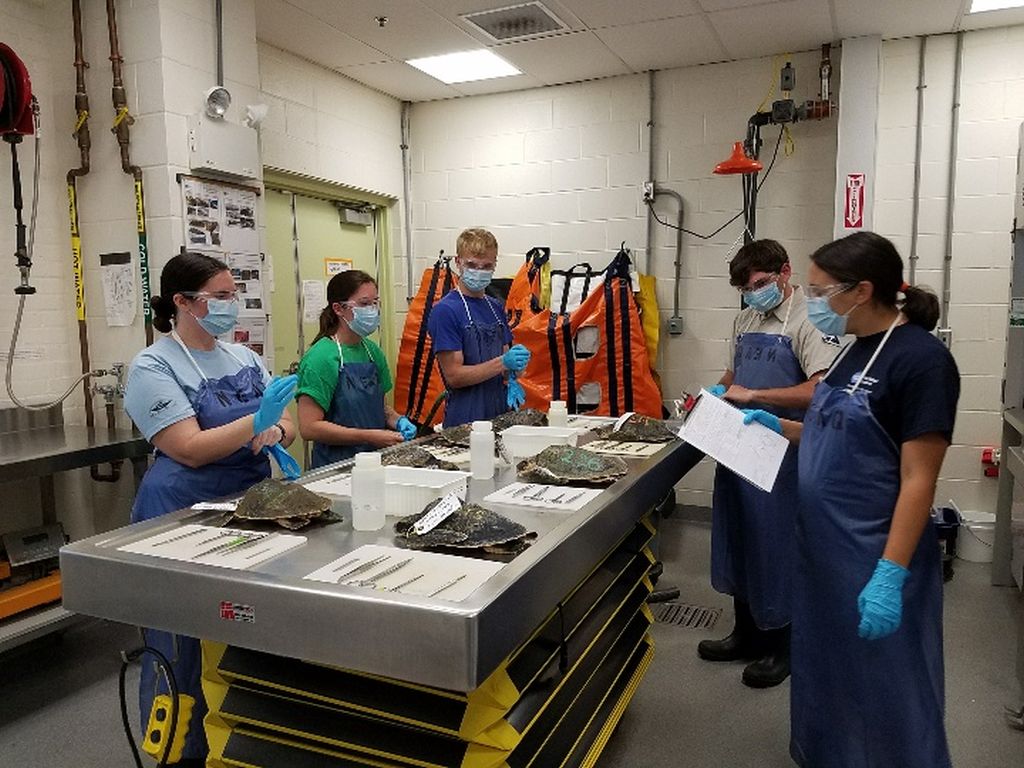
Comparing notes on necropsy techniques at the New England Aquarium (photo by Karen Dourdeville)
In June, the Wellfleet Bay turtle team spent a day at New England Aquarium’s rehab facility in Quincy, where Katie Puliares-Bonner walked them through the NEAq protocols for sea turtle necropsies (animal autopsies). These protocols are very similar to what WBWS staff already do, but it was useful to compare notes and to acquaint the new WBWS turtle team members with sea turtle necropsies.
Katie also demonstrated techniques for taking samples for histology analyses, which WBWS staff also hope to add to their summer stranding sampling work. The samples for histology analysis will be sent to Brian Stacy, of NOAA, an expert who looks at tissues microscopically to determine definitive cause and timing of death.
Summer means more boaters are in our local waters, so the chance for vessels to strike sea turtles obviously increases. Already this year, we’ve responded to two vessel-struck loggerheads and one leatherback, all in Buzzards Bay.
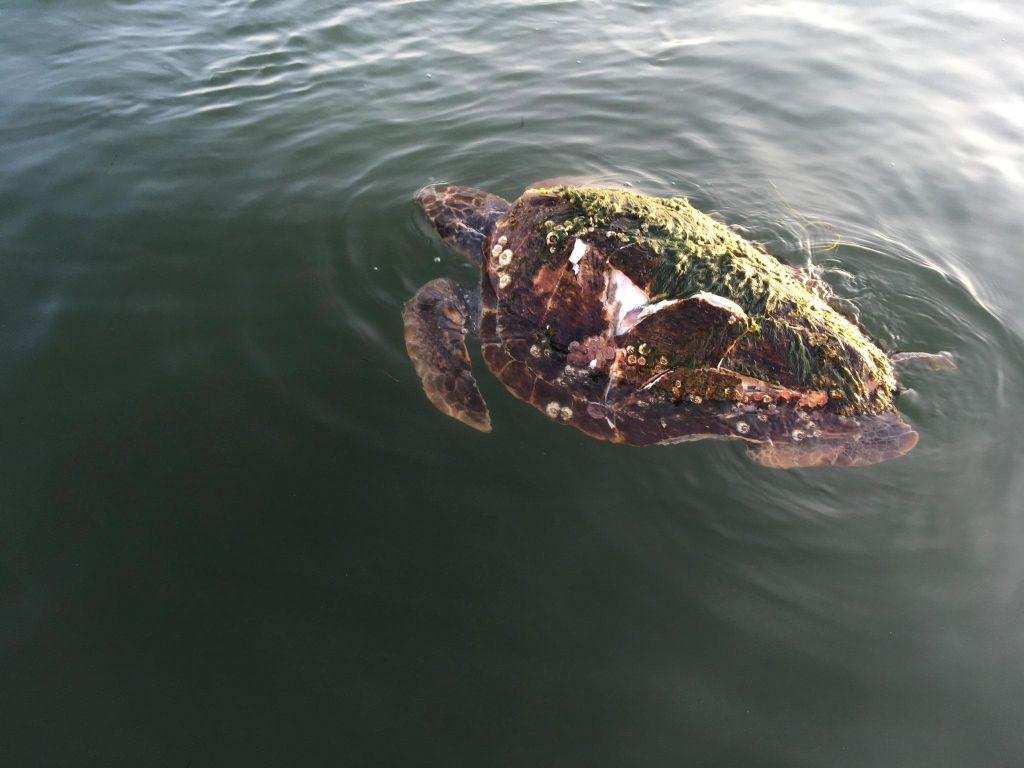
Many boaters are unaware that sea turtles come to southeastern New England to feed in the summer. As boating gets busier more of these endangered and threatened turtles fall victim to deadly propeller strikes. (Photo courtesy of Mike Margulis of Extreme Marine Diving Services).
Since 2003, WBWS has operated a sea turtle sightings hotline for boaters, asking them to report sightings at seaturtlesightings.org or by phone at 1-888-732-8878. The website tries to alert boaters to watch for the turtles and to educate them about what the turtles might look like in the water.
We have also set up a Facebook page called Sea Turtle Sightings New England. We hope anyone who has a boating or fishing friend will like and follow the page and share it. The more we get the word out about the sea turtles in our waters now, the better we can protect these animals.
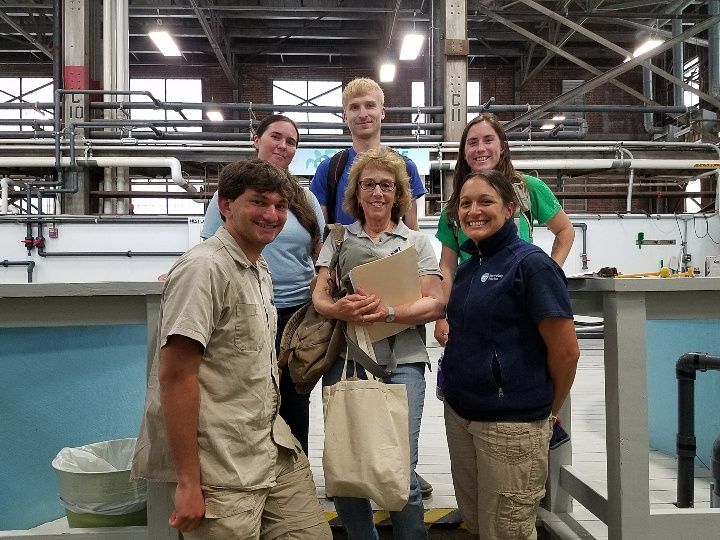
Turtle team: (from left): Noah Epstein, Maureen Duffy, Ben Thyng, Karen Dourdeville (middle), Becca Settele and NEAq’s Katie Pugliares-Bonner. (Photo by NEAq staff; Bob Prescott and Patty Levasseur not pictured)
This post was contributed by Wellfleet Bay sea turtle research associate Karen Dourdeville.
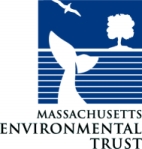 The Massachusetts Environmental Trust generates the funds used for grant awards from the sale of specialty license plates. Learn more >
The Massachusetts Environmental Trust generates the funds used for grant awards from the sale of specialty license plates. Learn more >

